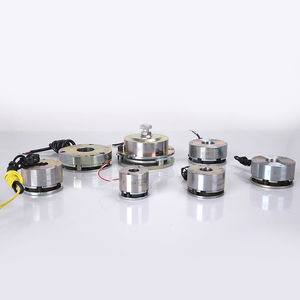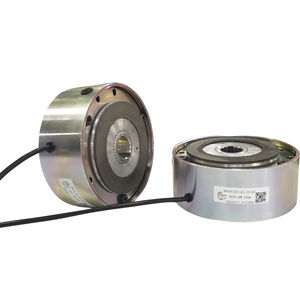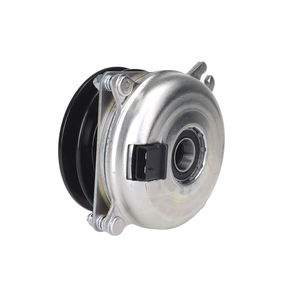
- Power Transmission - Mechanical components
- Mechanical Transmission
- Disc brake
- Reach Machinery Co.,Ltd.
Friction brake REB09 seriesdiscelectromagneticspring
Add to favorites
Compare this product
Characteristics
- Type
- friction, disc
- Operation
- electromagnetic, spring
- Other characteristics
- emergency, parking
- Torque
Max.: 95 Nm
(70.0684 ft.lb)Min.: 4 Nm
(2.9502 ft.lb)
Description
REACH REB09 series brake is a spring-applied electromagnetic brake in dry-friction (released when powered on and braked when powered off) with reliable braking force and holding force. Widely used in various applications of deceleration braking and holding braking.
REB09 series brakes for forklift drive wheel are mainly used in small and medium-sized electric forklifts, installed in the forklift drive wheel assembly. It brakes the drive wheel motor shaft and is mainly used as a parking and emergency brake for electric forklifts.
Working Principles
When stator is powered off, the spring generates forces upon armature, then the friction disc components will be clamped between armature and flange to generate braking torque. At that time, a gap Z is created between armature and stator.
When brakes need to be released, the stator should be connected DC power, then the armature will move to the stator by electromagnetic force. At that time, the armature pressed the spring while moving and the friction disc components are released to disengage the brake.
Product Features
Rated voltage of Brake (VDC): 24V,45V
Cost-effective, compact structure
Adapt to various working environments due to its high voltage resistance, good insulation, insulation grade F
Easy mounting
The working air gap can be adjusted at least 3 times after reaching the life air gap, which equals 3 times longer service life
Catalogs
No catalogs are available for this product.
See all of Reach Machinery Co.,Ltd.‘s catalogsRelated Searches
- Planetary gearbox
- Coaxial gearbox
- Right angle gearbox
- Flexible shaft coupling
- Compact gearbox
- Shafts coupling
- Friction brake
- Hollow-shaft gearbox
- Transmission gearbox
- Shaft gearbox
- Machine gearbox
- Spring brake
- Disc brake
- Low-backlash gearbox
- Electromagnetic brake
- Rigid shaft coupling
- Transmission shaft coupling
- Backlash-free coupling
- Friction clutch
- Robot gearbox
*Prices are pre-tax. They exclude delivery charges and customs duties and do not include additional charges for installation or activation options. Prices are indicative only and may vary by country, with changes to the cost of raw materials and exchange rates.










